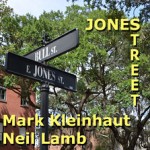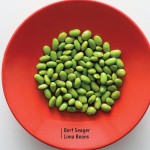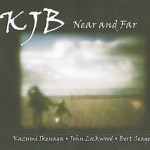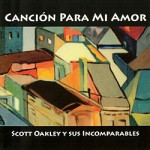Jones Street – Mark Kleinhaut and Neil Lamb back to discography page
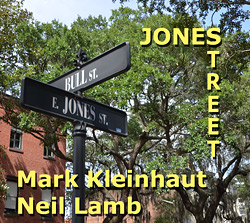

Jones Street
Ten compositions inspired by the city of Savannah, Georgia.
Song Titles and Times:
- City Market (4:32)
- Street Fair (5:41)
- Bull St. Scramble (5:18)
- Trickster (6:19)
- Sevaan (3:38)
- Guitar Bar (5:39)
- Up River (4:15)
- Twilight Garden (6:47)
- Tybee at Dawn (3:28)10. Ghost Tour (4:26)
- Left Channel: Mark Kleinhaut, Ribbecke Halfling
- Right Channel: Neil Lamb, Benedetto Bravo Seven String
All compositions by Mark Kleinhaut and Neil Lamb.
All music (P) © 2012 Mark Kleinhaut and Neil Lamb
Mark Kleinhaut & Neil Lamb Jones Street
There is something about the intimacy of a duet setting that brings out the positively extramusical. This is especially true in an improvised setting. Call it telepathy, ESP, heightened intuition or “getting a visit from the good fairy of music,” as Robert Fripp once called it, there is a kind of pixie dust that descends on both players when the stars are aligned, antennae are fully extended and everything is truly on one accord. Phrases are introduced by one player and magically completed by an empathetic partner. Modulations materialize simultaneously between the two players who may surprise each other by instinctively moving in the same new direction with no pre-arranged plan, no visual or verbal cues, no road map whatsoever. Chord changes are anticipated and beautifully underscored as if rehearsed, or a single note is injected into the proceedings to suddenly turn the music on its head, creating a new door for the two adventurers to walk through together. Such was the case when guitarists Mark Kleinhaut and Neil Lamb got together in the intimacy of an historic 19th century structure in Savannah, Georgia to commiserate with guitars, just for the fun of it, while on vacation in the peach state.
How these longtime residents of Maine happened to end up there is a bit of serendipity in itself. Luckily, guitarist-engineer Lamb brought along his compact mobile recording facility-a laptop, a hard drive and some direct boxes-when they finally did hook up; because the drama that unfolded is evidence that they were truly visited by the good fairy of music on that April day in 2010. Created spontaneously from pure, uninhibited jamming, and sculpted into a sequence of ten songs after the fact with the help of some judicious digital editing, Jones St. is a marvel of empathy and exploration by two kindred spirits. Being a guitar aficionado for the past 45 years, I am particularly interested in the magic that is summoned up when two six-stringers (or one six-stringer and one seven-stringer in the case of Kleinhaut and Lamb) sit down in the sparse and revealing setting of duets and engage each other’s instincts.
Historically, in the realm of jazz, there have been several significant guitar duet recordings. The earliest is the indelible hookup of jazz guitar pioneers Lonnie Johnson and Eddie Lang on their 1929 recordings of “Hot Fingers”, “A Handful of Riffs” and “Guitar Blues”. In more recent times there have been several noteworthy guitar duets that I have enjoyed, including Bucky & John Pizzarelli’s Swinging Sevens (1985), Joe Pass & John Pisano’s Duets (1991), George Van Eps & Howard Alden’s Hand-Crafted Swing (1992), Joe Diorio & Mick Goodrick’s Rare Birds (1993), Jim Hall & Pat Metheny (1999), Jim Hall & Bill Frisell’s Hemispheres (2008) and Mick Goodrick & Wolfgang Muthspiel’s Live at the Jazz Standard (2010). In each one of those cases-with the exception of four purely improvised tracks on the Hall/Metheny duet-the participants where exhibiting uncommon chemistry while extrapolating on existing jazz standards or newly-composed originals. And there is undeniable magic in that. But in the case of this strictly carte blanche duet recording between Kleinhaut and Lamb, the telepathy factor is off the charts. If such a thing could be measured at all, the needle would be pinging way into the red from start to finish on this extraordinary collection. “Neil and I met while I lived in Maine, and have been friends for years,” says Kleinhaut, who subsequently spent five years in Cleveland before relocating to Albany, New York, where he and his wife Erika currently reside. “But we rarely ever played together. He was the recording engineer on my last three CDs, so professionally I knew him more as an engineer. We would jam once in a while, but this thing in Savannah just sort of took off.”
The serendipitous meeting between Kleinhaut and Lamb hinted at the magical nature of the session itself. “It was a series of coincidences,” recalls Kleinhaut. “Neil and his wife, Cathy, were in Savannah, while Erika and I were vacationing on Jekyll Island, which is near Savannah. We hadn’t seen them for a while-since we moved to Cleveland-although we kept in touch by email, which is how we realized they were going to be in Savannah at the same time we were on Jekyll Island. The plan was to meet up for dinner, until a huge storm rolled in, and we bailed on getting together. But the seed was planted for the four of us to meet in Savannah the next year, we planned to hang out check out the restaurants and enjoy the city. Of course, Kleinhaut and Lamb both brought their guitars with them the following year. And they got together to jam, but there were no plans for a recording, no intention of releasing anything. This was strictly a jam between friends in the Deep South. Kleinhaut recalls, “Neil showed up with his recording rig, and as he was setting up, he said, ‘You don’t mind if I record this, do you?’ I said, ‘Sure, have another martini.’ We played for hours, running tape the whole time. And from that session came seven of the ten tunes. It was a completely serendipitous ‘Let’s just jam, have some fun…and by the way, let’s roll tape.’ A couple months later, Neil sent me the rough tracks, and I’d listen while driving around in my car. I emailed him and said, ‘I think there’s at least two good things on here (“Bull Street Scramble” and “Midnight Garden”).’ He wrote back and said, ‘No way, there’s a lot more than that.’ After a little arguing Neil said, ‘Let me show you. I’ll start cleaning things up.’ When I got the next CD I knew he was right, and I thought wow, maybe we should release this. But it wasn’t enough material for a full CD, so we made a plan to reconnect again in Savannah the following spring (2011).
This time we recorded for a couple of days and managed to squeak out three pieces. It took so much more effort for so much less output, because now we were trying.” All of the tunes, of course, were named after the fact with titles that pertain to the greater Savannah area. The opener, “City Market,” has Lamb running bass lines on his Benedetto “Bravo” 7-string (with a low A) while emphatically comping as Kleinhaut provides stunning single note improvisations and deft chord melodies on his Ribbecke “Hafling.” “Neil came up with a chord progression that was completely surprising to me,” says Kleinhaut. “So a lot of what I’m doing is reacting to his moving the chords around. When I’m searching to find melody and comfortable harmonic space, I tend to race around the fret board playing really fast. It’s not that I’m trying to dodge the tonal center; it’s that if I play fast I can cover more ground more quickly to get myself centered. But here, as soon as I would define that space, Neil would change it again, so on this tune Neil has me frenetically running around these different tonal centers trying to keep up. ” The balladic “Street Fair” is a telepathic joining of melody and harmony underscored by moving chords and a sympathetic melody on top. This mix of folk and classical feels has a truly engaging quality. “Neil suggested this title because it gave him the feeling of the genteel quality of a Southern country fair,” says Kleinhaut. “Bull St. Scramble” is a swinging encounter that has Lamb chunking rhythm guitar while running steady bass lines and Kleinhaut doing his fleet-fingered thing over the top. This piece marks a nimble passing-of-the-ball between the two savvy participants.
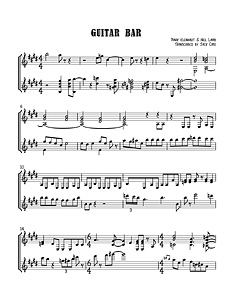 “It was the first piece out of all of the raw stuff I heard that I actually liked, Mark recalls, “Probably because it was the closest to home for me playing-wise. It felt like a freebop kind of thing. There’s trading and it’s very conversational in that jazz way. For me, that was the easiest thing to do.” “The Trickster”-“We were just laughing our asses off when we did that one,” says Mark. “Neil had a big grin on his face the whole time, and as soon as we started doing it we kind of knew, ‘Oh, now we’re doing a gypsy jazz thing.’ It wasn’t anything that either of us is really into, but we were just kind of goofing around with it and it just fell that way, and it turned out to be a lot of fun.” “Sevaan” is a beautiful ballad with Kleinhaut arpeggiating underneath Lamb’s bell-like single note lines. Mark says, “Neil is sometimes a little self-conscious about his single-note lines because he says he can’t play as fast as me. But I can’t play as low as him, so we’re even. He’s a very humble guy. Neil has a deep background in guitar and composition, he studied with Derek Bailey and he’s always had a penchant for free and outside playing. He’s done classical stuff too and spent some years working on Flamenco, so he really brings a lot to the table.” While the music on “Jones Street” all springs cohesively from the same well of improvisation, there is no shortage of variety as each piece offers unique flavors. “Guitar Bar” is a jaunty, blues-tinged, almost ragtimey offering with a bit of boogie woogie bass line and some fluid single note lines over the top by Lamb. It resolves to a bluesy meditation with Kleinhaut pulling out his ‘chops of doom’ signature over the 12-bar refrain.
“It was the first piece out of all of the raw stuff I heard that I actually liked, Mark recalls, “Probably because it was the closest to home for me playing-wise. It felt like a freebop kind of thing. There’s trading and it’s very conversational in that jazz way. For me, that was the easiest thing to do.” “The Trickster”-“We were just laughing our asses off when we did that one,” says Mark. “Neil had a big grin on his face the whole time, and as soon as we started doing it we kind of knew, ‘Oh, now we’re doing a gypsy jazz thing.’ It wasn’t anything that either of us is really into, but we were just kind of goofing around with it and it just fell that way, and it turned out to be a lot of fun.” “Sevaan” is a beautiful ballad with Kleinhaut arpeggiating underneath Lamb’s bell-like single note lines. Mark says, “Neil is sometimes a little self-conscious about his single-note lines because he says he can’t play as fast as me. But I can’t play as low as him, so we’re even. He’s a very humble guy. Neil has a deep background in guitar and composition, he studied with Derek Bailey and he’s always had a penchant for free and outside playing. He’s done classical stuff too and spent some years working on Flamenco, so he really brings a lot to the table.” While the music on “Jones Street” all springs cohesively from the same well of improvisation, there is no shortage of variety as each piece offers unique flavors. “Guitar Bar” is a jaunty, blues-tinged, almost ragtimey offering with a bit of boogie woogie bass line and some fluid single note lines over the top by Lamb. It resolves to a bluesy meditation with Kleinhaut pulling out his ‘chops of doom’ signature over the 12-bar refrain.
“Up River” is an adventurous free jazz number that has Kleinhaut unleashing his signature snaky, Pat Martino-influence linear barrages on top of Lamb’s steady comping and bass lines while the oddly sinister “Midnight Garden” (the title a tip ‘o’ the cap to the 1994 John Berendt novel and subsequent Clint Eastwood film from 2007, Midnight in the Garden of Good and Evil) is an introspective exercise in cellular division. As Kleinhaut explains, “The whole thing keeps building energy throughout. I like hearing how it’s got a very long arc to it and it picks up steam but really takes its time to get there. When I listen to the beginning of this, I get this imagery of cellular division, where the motif starts off and it splits again, then again, and again. And the final notes of that song sound like bubbles to me…effervescence coming off the top of the glass and going into the air.” “Tybee at Dawn,” a graceful ballad named for Tybee Island, just a 20-minute drive outside of Savannah, builds to a surprising ending. “Tybee is a peaceful place,” says Kleinhaut. “The image here is the beach at dawn and the song’s explosive ending…is like when the sun finally comes up. Sunrise takes its time to get there with the sky gradually lightening, but when the top of the sun finally breaks the horizon daybreak happens really fast. So the song has that kind of anticipation.” The album’s closer, “Ghost Tour,” is an exploration in dissonance and rubato delicacy that addresses Savannah’s longstanding history of ghosts and haunted houses. “It’s the darkest piece,” says Kleinhaut. “A little bit creepy and appropriate for the haunted places of Savannah with their Spanish moss and murky shadows.”
Fellow six-string aficionados will marvel at the intricacy and depth of expression that these two accomplished guitarists were able to achieve on this strictly off-the-cuff offering. That kind of musical telepathy is rare indeed. -Bill Milkowski
Bill Milkowski is a regular contributor to Jazz Times magazine. He is also the author of “JACO: The Extraordinary and Tragic Life of Jaco Pastorius” and co-author of “Here And Now! The Autobiography of Pat Martino” (both on Backbeat Books).

